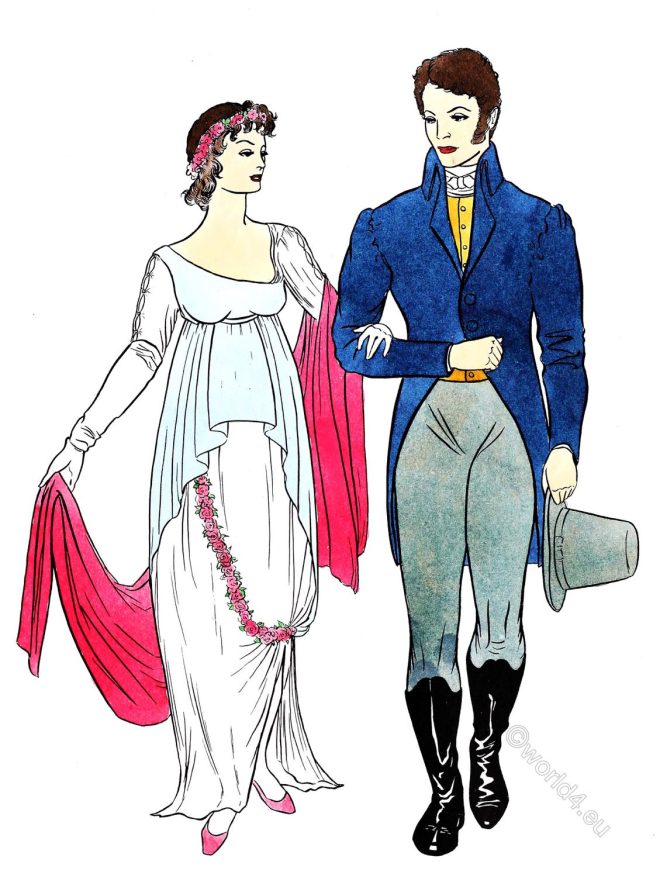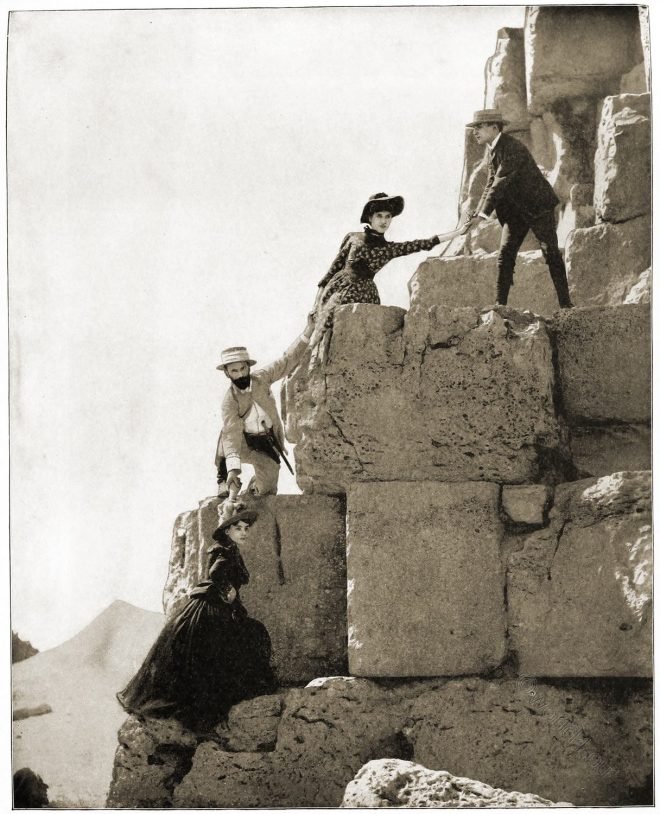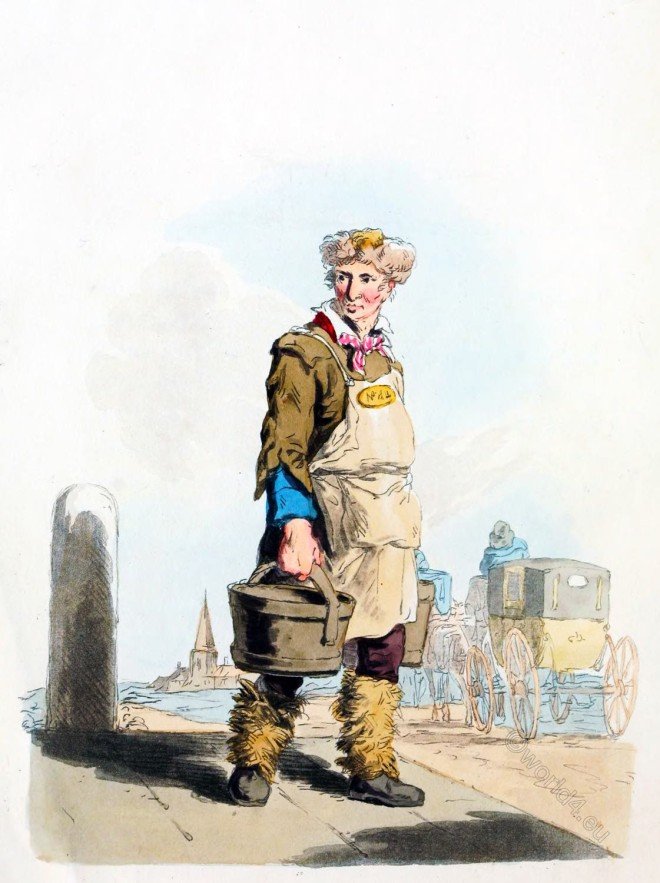History of Costume by Auguste Racinet. Costumes of the nobility in the time of Henry IV of France. 16th, 17th century. Court Toilets & Ceremonial Robes.
Category: Europe
Fashions in Europe. European Costume and Cultural History.
Southeast view of the Temple of Poseidon at Sounion, Greece.
The ancient Greek temple of Poseidon at Cape Sunnius, built between 444-440 BC, is one of the main monuments of Athens’ Golden Age.
French directoire. Neoclassical fashion in the transition to the Empire.
French directoire. Neoclassical fashion in the transition to the Empire. 1789-1800.
Library Window Curtain. Regency era 1815.
Design for grand architectural additions and drapes that add Palladian or Venetian proportions to a narrow window bay.
Climbing the Great Pyramid of Giza in Egypt.
Gay Nineties. Late victorian fashion of the 1890s. In about fifteen minutes one can thus reach the summit of Cheops, which is now a platform about thirty feet square.
View of the village of Nikali, near Larissa, the capital of Thessaly, Greece.
The nearer objects in the picture are those in the village of Nikali, where the principal house is the pyrgos, or tower, in which the agha is represented smoking.
The Scottish clan Buchanan, their Tartan, Badge and War Cry.
Towards the middle of the 13th century, Gilbert, seneschal to the Earl of Lennox, obtained from him a part of the lands of Buchanan in Stirlingshire, and took his name from them.
Royal gloves of Henry VIII. Tudor King of England.
One of the most beautiful pair of gloves probably in existence, and fortunately in a fine state of preservation.
View of a waterman to a coach stand, carrying two pails of water.
At every stand for hackney-coaches in the metropolis, there is one or more persons termed watermen, whose occupation is to attend to the horses.
Anglo-Saxon dress, ornaments and relics of gold and bronze.
The great love of the Saxons for display in dress and ornament led to a very, remarkable development of artistic skill in fashioning and decorating articles of jewelry, which were worn by men in greater profusion than by women.










